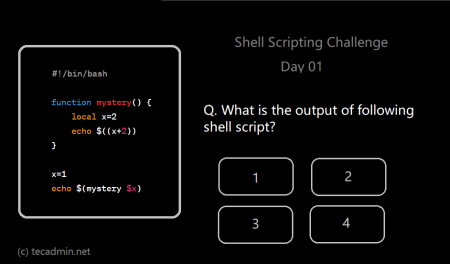Bash (short for Bourne Again SHell) is a powerful and versatile command-line interface widely used in Unix-based operating systems. When writing Bash scripts, you’ll often need to pass arguments and use flags to customize the script’s behavior. This article will provide a comprehensive guide to effectively utilizing arguments and flags in your Bash scripts. We will cover the basics, discuss advanced techniques, and provide practical examples to help you become proficient in Bash scripting.
1. Understanding Arguments and Flags in Bash
An argument is a value or input that a script or command takes, while a flag (also known as an option or switch) modifies the behavior of the command or script. In a Bash script, you can access arguments using the special variables $0, $1, $2, etc., where $0 represents the script or command name, and $1, $2, and so on represent subsequent arguments. Flags usually begin with a single hyphen (-) followed by a single letter or a double hyphen (--) followed by a full word.
2. Accessing and Using Arguments
To access and use arguments in a Bash script, you can follow these simple steps:
- Create a script file (e.g., script.sh) and open it in a text editor.
- Inside the script, you can access arguments using the special variables mentioned earlier. For example, to print the first argument, you can use the following line:
#!/usr/bin/env bash echo "The first argument is: $1" echo "The second argument is: $2" - Save and close the script file.
- To run the script with arguments, simply provide them after the script name in the command line. For example:
./script.sh argument1 argument2
3. Handling Flags with getopts
To handle flags in a Bash script, you can use the built-in `getopts` command. getopts is a loop that iterates over each flag and its value. The basic syntax is:
while getopts ":<flags>" option; do
case $option in
<flag>>)
# code to execute when flag1 is provided
;;
<flag2>)
# code to execute when flag2 is provided
;;
*)
# code to execute when an unknown flag is provided
;;
esac
done
Here’s an example of a script that accepts the flags -f and -d with corresponding values:
#!/usr/bin/env bash
while getopts ":f:d:" option; do
case $option in
f)
file_name="$OPTARG"
;;
d)
directory_name="$OPTARG"
;;
*)
echo "Usage: $0 [-f file_name] [-d directory_name]"
exit 1
;;
esac
done
echo "File name: $file_name"
echo "Directory name: $directory_name"
Execute the above example script as below:
./script.sh -f myfile.txt -d mydir
The getops will process the -f and -d flags and store them to corresponding variables. Then you can use that variables in your script. In the case of above command, You will see the following output:
File name: myfile.txt
Directory name: mydir
4. Advanced Techniques and Tips
- To handle long flags, you can use the shift command, which shifts positional parameters to the left. You can use a combination of shift and a case statement to handle long flags.
- To ensure your script is more user-friendly, include a help flag (e.g.,
-hor--help) that displays usage instructions. - If your script requires a specific number of arguments, you can use conditional statements to check the argument count and display an error message if needed.
Conclusion
Mastering the use of arguments and flags in Bash scripts is essential for creating flexible and customizable scripts. By understanding the basics and applying the advanced techniques mentioned in this guide, you can effectively harness the full potential of Bash scripting. Keep practicing and experimenting with different flag and argument combinations to expand your skills and create more efficient, user-friendly scripts. With time and dedication, you’ll be able to create complex, powerful scripts that can perform a wide variety of tasks and automate many aspects of your workflow. Happy scripting!
